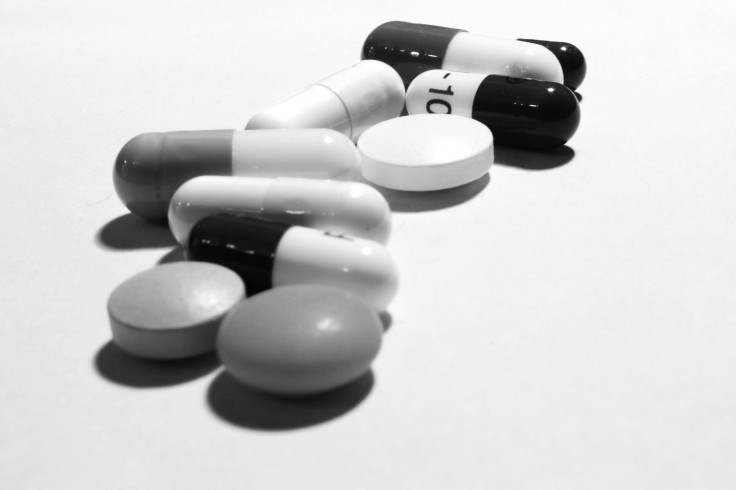Exercise Pill Offers Effects Of Physical Exertion Without A Sweat: Could It Soon Replace The Treadmill?

The possibility of an exercise pill is on the horizon, as two new studies investigate the benefits and drawbacks of reaping the rewards of exercise without actually exercising. Such a pill, however, has been the subject of much debate and criticism among doctors and weight-loss seekers alike.
"Exercise has so many health benefits," said the study's co-author, Dr. Thomas Burris, who is also the chairman of pharmacological and physiological science at St. Louis University School of Medicine. "No drug can" replicate all of the benefits exercise has to offer, Burris said, explaining his concern for people popping pills to achieve greater athleticism and weight loss goals.
The studies, which were published in Nature Medicine, were follow ups to a major study published last year in Nature that looked at how to alter a person's metabolism with a pill and then cause the body to increase energy exertion, similar to that of actually exercising. The original 2012 study conducted by researchers at the Scripps Research Institute in Jupiter, Fla. found that when the protein REV-ERB was activated, they could partially control circadian rhythms and the internal biological clocks of obese mice. Their interest in the REV-ERB protein is based on its ability to express in the liver, skeletal muscle, adipose tissue, brain, and more importantly, the development and circadian regulation.
How does a pill exercise for me?
Circadian rhythms are a 24-hour cycle in the physiological process that is key to controlling the sleeping and feeding patterns of all animals, including human beings. Once researchers developed a compound that could increase the potency of the REV-ERB protein, which was injected into the obese mice, they found despite their high-fat diet, they lost weight and their cholesterol profiles improved.
It's not the weight loss that necessarily has researchers surprised, but it's the drug's effects on the mice that mimic those of exercise. The treated mice exerted five percent more energy than untreated mice even though they were not moving, and in most cases, the treated mice became more lethargic, but experienced exercise-like benefits regardless.
This encouraged the Scripps researchers to further their investigation and begin working with the Pasteur Institute in France to see what the injections would do to muscle movement. In order to test this new theory of REV-ERB's protein effect on muscles, scientists took mice that can be affectionately labeled as anti-athletes. These mice were specially developed for the experiment with a very low level of mitochondria, an important cellular structure that helps generate energy while consuming oxygen — a function that is key to aerobic exercise. The mice's oxygen capacities maxed out at 60 percent lower than normal, and the mice showed poor endurance and were physically exhausted much more quickly than mice with normal mitochondrial levels.
The next step of the experiment was to add the REV-ERB protein-stimulating compound to the mitochondria-deficient mice. The researchers found that cells began creating large numbers of mitochondria to make up for their loss. REV-ERB protein was also produced at higher rates, and soon enough, researchers noted that the mice could run "significantly longer both in time and distance" than the untreated animals.
Are we ready for an exercise pill?
Burris could not ignore that the drug "certainly seems to act as an exercise mimic," he said. But the drug is still in such an early age of discovery; it hasn't been fully developed and tested for safety. But the ambiguous future of such a drug's exercise abilities doesn't stop the curiosity of benefit seekers. "I have been told to expect some weird phone calls," said Burris, after being warned by other scientists who have published data about potential exercise pills in the past. Pharmacological exercise could pose as another moral scientific challenge that makes one wonder — is this cheating our natural biology?
Another recent study, which was published in PLoS Biology, reveals similar findings by scientists at Washington University School of Medicine in St. Louis. They too tried to manipulate mitochondrial cells with large doses of resveratrol, a natural substance found primarily in red wine, grape skins, and nuts. They found that not only did it create new mitochondria in muscle cells, but it also mimicked the body's physical exertion during aerobic exercise.
Unfortunately, when mice and rats were slipped resveratrol in their food, it didn't provide the same effect as very high doses did. Dr. John O. Holloszy, a co-author of the study and professor of medicine at Washington University, said it actually had a "toxic effect" at such high levels and ruined the full development of healthy mitochondrial function.
Scientists, such as Burris, say the goal of such research is to provide an accessible way for those who physically cannot exercise to experience and benefit from aerobic exercise.
Sources: Asaka M, Han D, Higashida K, Holloszy J. Effects of Resveratrol and SIRT1 on PGC-1α Activity and Mitochondrial Biogenesis: A Reevaluation. PLoS. 2013.
Banerjee S, Hughes T, Solt LA, et al. Regulation of circadian behaviour and metabolism by synthetic REV-ERB agonists. Nature. 2012.
Solt L, Woldt, E, Yasmine S, et al. Rev-erb-α modulates skeletal muscle oxidative capacity by regulating mitochondrial biogenesis and autophagy. Nature Medicine. 2013.



























